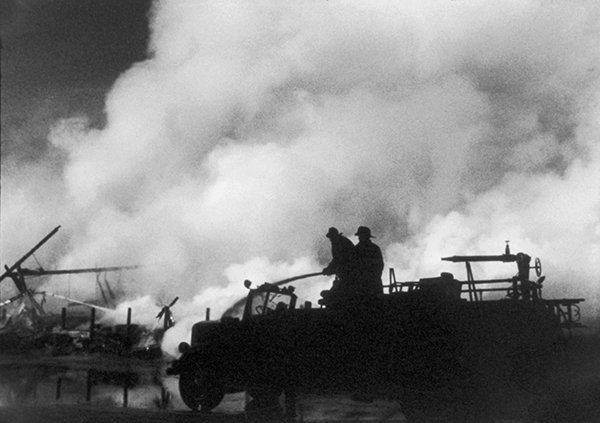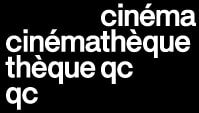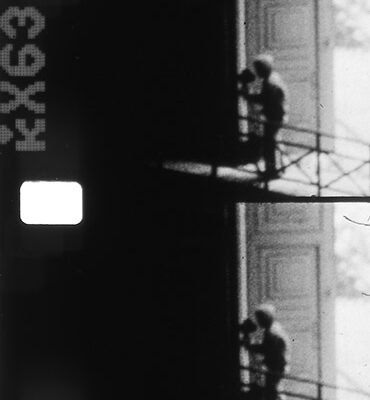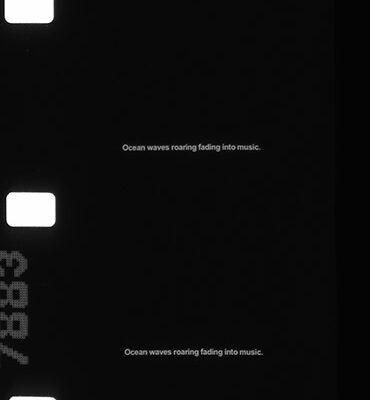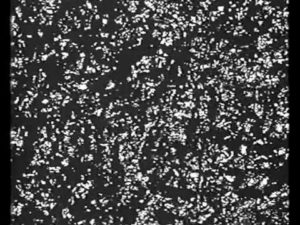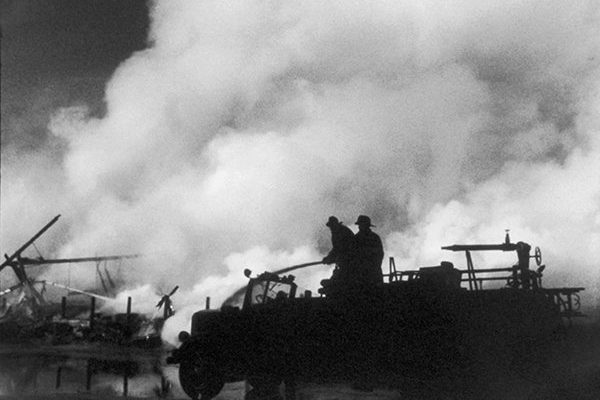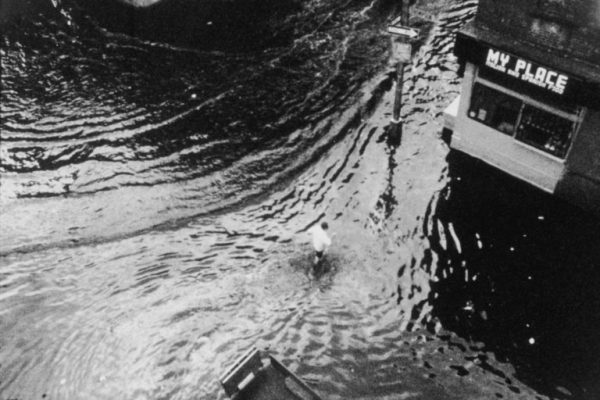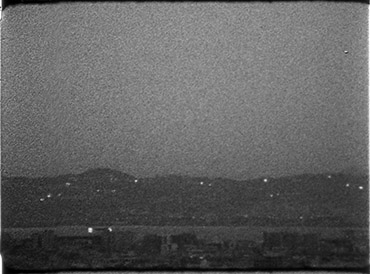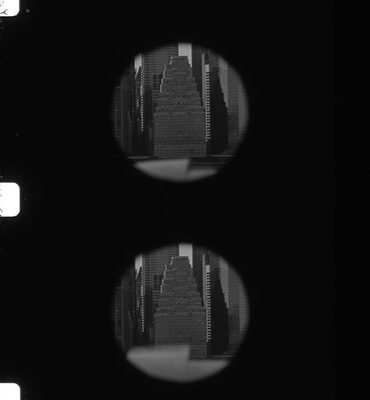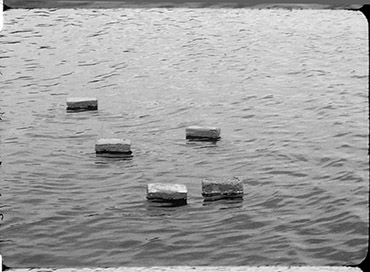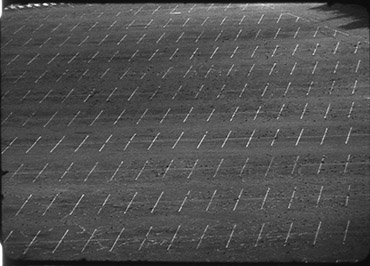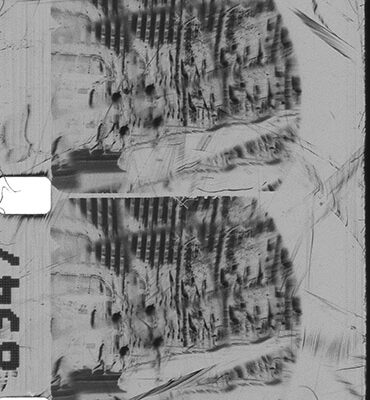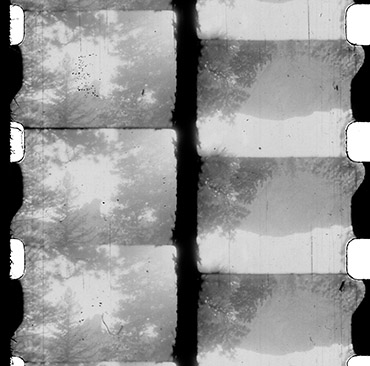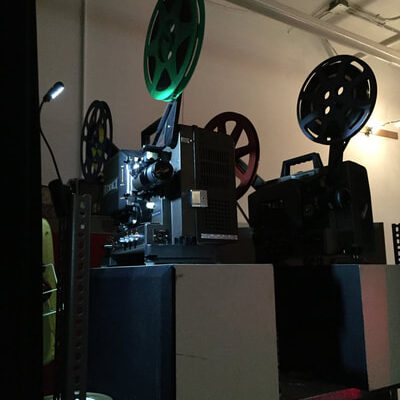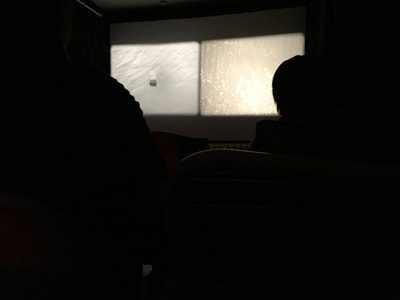Quand | When
08.05.2017 | 21h00
11.05.2017 | 20h00
Où | Where
la lumière collective
7080, rue Alexandra, Montréal [QC]
la cinémathèque québécoise
335, boul. De Maisonneuve Est, Montréal [QC]
Média | Media
16mm
Billets | Tickets
cinémathèquequébécoise.qc.ca
7$ à la porte
“My work is not encumbered by ideas. There is no purpose to my work other than just allowing someone into my visual sensibility. I’ve always tried to fight the tendency to create additive meaning.” – Peter Hutton
J’ai d’abord été sculpteur, puis peintre et finalement cinéaste, traitant évidemment toujours l’espace en trois dimensions. Quand je me suis mis au film, je visualisais ces projections planes et en deux dimensions, comme des sculptures en trois dimensions : cela donne à l’œil de quoi s’impliquer, plus de surface et d’espace à parcourir. Je pense que si une image vous implique, elle donne à l’œil une carte spatiale intéressante à suivre.
PETER HUTTON
(1944 – 2016)
Mon travail ne s’encombre pas d’idées. Mon travail n’a d’autre but que de laisser pénétrer quelqu’un dans ma sensibilité visuelle. Je me suis toujours efforcé de lutter contre la tendance à créer du sens supplémentaire, comme les frères Lumière qui n’avaient pas l’intention d’exprimer davantage que la simple accumulation des images. À l’inverse, ils allaient quasiment sans bagages à la découverte des lieux ; ils réagissaient aux choses comme elles venaient. L’expérience de mes films est un peu comme le rêve éveillé. […] Il faut simplement prendre le temps de se poser et de regarder, ce qui je pense n’est pas une attitude très occidentale. Nombre des influences auxquelles j’ai été soumis dans ma jeunesse étaient plus orientales. Elles proposaient un regard contemplatif – qu’il s’agisse de peinture, de sculpture, d’architecture, ou simplement d’un paysage – fondé sur l’idée que plus on passe réellement de temps à regarder les choses, plus elles se révèlent selon des modes inattendus.
Il y a à l’origine de ce que je fais une idée très simple, qui est d’essayer de ramener les gens vers le passé, plutôt que de les propulser vers le futur. L’utilisation du noir et blanc donne l’impression de n’être plus assujetti au temps, mais en suspens dans un espace où il n’y pas de référence manifeste au vécu quotidien. Pour moi, l’un des aspects les plus attrayants du cinéma, c’est le fait de pouvoir susciter une impression de mystère, d’émerveillement ou de curiosité dans un environnement, un paysage, une pièce, n’importe quel endroit, en arrêtant le temps. Les incroyables épiphanies de la nature sont souvent à peine perceptibles, à la limite même de ce que peuvent capter bien des personnes. Mes films tentent d’enregistrer et d’offrir quelques-unes de ces expériences.
Ce que je trouve exaltant dans le cinéma, c’est le mouvement et la transformation : l’idée d’apporter la perception du temps dans des représentations figées de la nature. Mais d’un autre côté, il y a souvent dans mes films une volonté « d’arrêter le temps », de laisser le temps n’être plus qu’un élément neutralisant qui fournit une petite révélation au sujet de l’image.
J’ai d’abord été sculpteur, puis peintre et finalement cinéaste, traitant évidemment toujours l’espace en trois dimensions. Quand je me suis mis au film, je visualisais ces projections planes et en deux dimensions, comme des sculptures en trois dimensions : cela donne à l’œil de quoi s’impliquer, plus de surface et d’espace à parcourir. Je pense que si une image vous implique, elle donne à l’œil une carte spatiale intéressante à suivre. Il me plaît de rappeler aux gens le potentiel visuel que recèle le fait de s’impliquer dans une image, de partir pour un petit voyage dans l’image. Chaque prise devient un film en soi, chorégraphié de manière intéressante, où on voit l’évolution d’un mouvement, souvent une transformation et enfin la conclusion. – Peter Hutton.
Extraits édités, tirés de Cinéma Critique 3, de Scott MacDonald, Interviews avec des cinéastes indépendants, in Presses de l’Université de Californie, Berkeley/Los Angeles/London. [Traduction: Ardèche images]
My work is not encumbered by ideas. There is no purpose to my work other than just allowing someone into my visual sensibility. I’ve always tried to fight the tendency to create additive meaning. The Lumières were not intent on providing you with a bigger idea that results from the accumulation of images. Rather, they explored places without a lot of baggage; they responded to things as they came. The experience of my films is a little like daydreaming. It might just be a formal composition that takes a while to develop, but as soon as you engage with it, you feel much more satisfied because you’re actually interacting with the work. It’s about taking the time to just sit down and look at things, which I don’t think is a very Western preoccupation. A lot of influences on me when I was younger were more Eastern. They suggested a contemplative way of looking – whether at painting, sculpture, architecture, or just a landscape – where the more time you spend actually looking at things, the more they reveal themselves in ways that you don’t expect.
There’s a very simple idea behind what I do, which is to try to take people back in time, rather than forward into the future. Using black and white is like being taken out of time and suspended in a space where there is no overt reference to daily experience. To me one of the most attractive things about cinema is the fact you can evoke a sense of mystery, of wonder or curiosity in an environment, a landscape, a room, anyplace, by suspending time. The incredible epiphanies of nature are often very subtle things, right at the edge of most people’s sensibilities. My films try to record and offer some of these experiences.
What excites me about cinema are movement and transformation: the idea of bringing a sense of time into frozen renditions of nature. But on the other hand, there’s often an attempt to “stop time” in my films, letting time be an overriding element that provides some small revelation about the image. Mine is an extremely reductive strategy: it’s just collecting images, looking through the lens and seeing things that I really respond to, and recording them. I’m much less involved in the idea of structuring films, packaging images: there’s no plan. It just happens. Designing a structure that becomes a significant part of the film is the antithesis of what I do. My structures are a result of what the images tell me. It’s less an intellectual than an intuitive process.
I was first a sculptor and then a painter and finally a filmmaker, always overtly contemplating space in a three-dimensional way. When I got into film, I very much envisioned these flat, two-dimensional projections as three-dimensional sculptures: this gives the eye something to engage with, more surface and space to wander through. I think if an image is engaging, it provides the eye with an interesting spatial map to follow. I’m interested in reminding people of the visual potential of engaging with an image, of going on a little journey within the image. Each shot becomes a film in itself, if it’s choreographed in an interesting way, where you see the development of a movement and often a transformation and then the conclusion. – Peter Hutton
Edited excerpts from Scott MacDonald, A Critical Cinema 3. Interviews with Independent Filmmakers, in University of California Press, Berkeley/Los Angeles/London. [Editor: Ardèche images]
OEUVRES PAR | WORKS BY PETER HUTTON
08.05.2017 | la Cinémathèque québécoise | 21h00 | 71 min
1979 | 16mm | silent | 16 min
” Ce portrait fait partie d’une série de trois films intitulée New York Portrait que Peter Hutton réalise de 1978 à 1981. Cet ensemble présente des plans fixes et muets qui soulignent la grande pureté plastique de l’image en noir et blanc des paysages atmosphériques de New York. Tandis que la géométrie de l’architecture et de la composition rappelle Manhatta, Peter Hutton accentue dans son film le caractère abstrait de la ville, qui se découpe dans la brume ou les reflets scintillant sur l’eau. La présence d’habitants se réduit à des silhouettes peuplant un espace sculpté par la lumière et l’ombre qui invite à la contemplation. Les plans réalisés par Peter Hutton ressemblent à une série de photographies en mouvement : ils renouent avec le mode de production des films d’Edison ou des frères Lumière, dont les films sont systématiquement composés d’une seule prise de vues et d’un plan unique. ” – [Centre Pompidou-Metz]
“Hutton’s most impressive work … the filmmaker’s style takes on an assertive edge that marks his maturity. The landscape has a majesty that serves to reflect the meditative interiority of the artist independent of any human presence. … New York is framed in the dark nights of a lonely winter. The pulse of street life finds no role in NEW YORK PORTRAIT; the dense metropolitan population and imposing urban locale disappear before Hutton’s concern for the primal force of a universal presence. With an eye for the ordinary, Hutton can point his camera toward the clouds finding flocks of birds, or turn back to the simple objects around his apartment struggling to elicit a personal intuition from their presence. … Hutton finds a harmonious, if at times melancholy, rapport with the natural elements that retain their grace in spite of the city’s artificial environment. The city becomes a ghost town that the filmmaker transforms into a vehicle reflecting his personal mood. The last shot looks across a Brooklyn beach toward the skyline of Coney Island’s amusement park .? The quiet park evokes the once frantic city smothered by winter. Nature continues its eternal cycles impervious to the presence of man, the aspirations of society, or the decay of the metropolis.” – [Millennium Film Journal]
1981 | 16mm | silent | 16 min
euxième chapitre du portrait en trois volets de New York, ce film se compose de moments de la vie quotidienne de la ville, minutieusement filmés. De l’ordinaire au tragique, du pittoresque au monumental, Hutton brosse le portrait de la ville telle qu’il la voit. Chaque séquence est une étude en miniature et leur succession dresse un tableau dynamique du microcosme complexe qu’est la ville de New York. -[la-loge.be]
CHAPTER TWO represents a continuation of daily observations from the environment of Manhattan compiled over a period from 1980-1981. This is the second part of an extended life’s portrait of New York.
“Hutton’s black and white haikus are an exquisite distillation of the cinematic eye. The limitations imposed – no color, no sound, no movement (except from a vehicle not directly propelled by the filmmaker), no direct cuts since the images are born and die in black – ironically entail an ultimate freedom of the imagination. … If pleasure can disturb, Hutton’s ploys emerge in full focus. These materializing then evaporating images don’t ignite, but conjure strains of fleeting panoramas of detached bemusement. More than mere photography, Hutton’s contained-with-in-the-frame juxtapositions are filmic explorations of the benign and the tragic ….” -[Warren Sonbert]
1990 | 16mm | silent | 15 min
« Dernier film citadin de Peter Hutton, New York Portrait, Chapter III acquiert une dimension différente lorsqu’on le relie au travail d’exploration du paysage rural effectué par le réalisateur. Le fait même que Hutton utilise des prises de vue anciennes et des archives crée une texture différente de ces deux films précédents sur New York. Hutton décèle toujours la présence de la nature dans la ville, pas seulement dans ses nombreux plans de ciel et de végétation, mais aussi dans la géométrie et la texture de la ville elle-même, qui semble vouloir s’affranchir de l’être humain. » – [Tom Gunning, Traduction: Ardèche images]
”[Hutton’s] latest urban film, NEW YORK PORTRAIT III, takes on a unique tone in relation to Hutton’s ongoing exploration of rural landscape. The very fact that Hutton is dealing with older footage, with archives of memory more than immediacy, gives it a different texture than his earlier New York films, in spite of many continuities with them. Hutton always found the presence of nature in the city, not only in his many shots of sky and vegetation, but also in the geometry and texture of the city itself, which seemed to project an independence from the human. This film seems to bathe itself in a nostalgia for things human, as if Hutton were looking at a vanishing race. Again humor rather than lamentation prevails, but never has it seemed that people were so contingent in Hutton’s films. The high angle of observation, frequent in Hutton’s previous New York films (and an invocation of their diaristic observer quality), here seems to carry a sense of withdrawal, a distance matched by compassion. … The final image in which a small shape against the scale of skyscraper and sky suddenly reveals itself as human by its motion seems emblematic, as does Hutton’s observations of the accidents and rescue of people below on the street.” – [Tom Gunning]
1979 | 16mm | silent | 8 min
« Le film Boston Fire trouve sa magnificence dans la fumée qui s’élève d’une manière expressive d’un paysage urbain en feu. Des lambeaux d’obscurité en tourbillons et de l’eau jaillissant dans le cadre s’entremêlent pour composer une symphonie d’éléments naturels. La superbe texture de la fumée, s’ajoutant à l’absence voulue de la source de l’incendie, occulte l’effet destructeur d’un tel événement. La caméra, perdue dans d’immenses nuages sombres, livre des images qui portent à la méditation, détachées des causes ou des conséquences de la scène. Les minuscules pompiers, dont on ne voit que les silhouettes au loin, sont figés d’effroi, incapables d’agir face à la puissance de la nature. » – [Millennium Film Journal, Traduction: Ardèche images]
”BOSTON FIRE finds grandeur in smoke rising eloquently from a city blaze. Billowing puffs of darkness blend with fountains of water streaming in from offscreen to orchestrate a play of primal elements. The beautiful texture of the smoke coupled with the isolation from the source of the fire erases the destructive impact of the event. The camera, lost in the immense dark clouds, produces images for meditation removed from the causes or consequences of the scene. The tiny firemen, seen as distant silhouettes, gaze in awe, helpless before nature’s power.” -[Millennium Film Journal]
1997 | 16mm | silent | 16 min
La première partie d’un portrait de l’Hudson River au fil des saisons. Images de l’hiver sur une période de deux ans.
The first part of a seasonal portrait of the Hudson River. This section portrays observations of winter over a period of two years.
A ROLL FOR PETER
11.05.2017 | 21h00 | la lumière collective | 68 min
Peu de temps après le décès de Peter Hutton, soit le 25 juin 2016, ses anciens collègues et élèves Jennifer Reeves et Mark Street ont lancé un appel à soumissions:
“Nous vous invitons à faire partie d’un projet collectif qui a pour but de rendre hommage à Peter. En voici le déroulement : filmez une bobine de film noir et blanc réversible 16mm de 100 pieds, développez-la, et envoyez-nous la bobine entière (ou une partie distincte) avant le 1er octobre 2016. Nous les assemblerons, séparées par des noirs, et nous les présenterons avec quelques films de Peter à New York : le lieu reste à être déterminé.
Vous avez peut-être été son élève, son collègue, son ami ou il a inspiré votre pratique filmique. Vous n’avez peut-être pas filmé depuis de nombreuses années; vous n’avez peut-être JAMAIS filmé… C’est le moment d’essayer quelque chose de nouveau. Filmer le temps d’une bobine, sans son (un élément à la base de la pratique de Peter) permettra certainement à chacun d’entre nous de penser à Peter et à son travail solitaire. Les bobines rassemblées, à l’image de notre communauté”.
Près de 36 cinéastes ont soumis une bobine.
Le projet a été présenté au Bard Collège le 22 octobre 2016, au X Festival de Mono No Aware le 9 novembre 2016 (salle comble).
Suite à l’intérêt grandissant pour le projet, ces bobines tournent dans plusieurs lieux de diffusion. À la fin de cette tournée, les bobines seront désassemblées et renvoyées à leur contributeur respectif.
Grâce à la générosité du Thomas Cole National Historic Site et au professeur et historien Scott MacDonald, des copies de la publication Peter Hutton: Hudson River Filmmaker seront disponibles (contribution volontaire : 5$). – [Traduction: Emma Roufs]
Soon after filmmaker Peter Hutton passed away on June 25th, 2016, colleagues and former students Jennifer Reeves and Mark Street put out a call for submissions:
“Please consider joining us in a group project that we think honors Peter’s memory. Here’s how it works: shoot a 100 foot roll of black and white 16mm reversal film, process it, and send the entire (or a stand-alone portion of the) roll to us by October 1, 2016. We’ll string them together with black leader between the contributions, and screen them along with a couple of Peter’s films at a New York venue TBD.
Maybe you were his student, his colleague, a friend, or a filmmaker who finds his work inspiring. Maybe you haven’t shot film for many years; maybe you’ve NEVER shot film…. this is your opportunity to try something new. Photographing a single, silent roll (always the building block for Peter’s work) should allow us each to think about Peter and his work in solitude, and then bring the results together in concert with our community.”
About three dozen filmmakers submitted a roll.
The project screened at A Tribute to Peter Hutton held at Bard College on 22 October 2016 and in a sold out screening on 9 November 2016 as part of Mono No Aware’s X Festival. Due to broader interest, the programme is touring to various venues. At the close of the tour the reels will be disassembled and the footage will be returned to the individual contributors.
The Thomas Cole National Historic Site and film scholar Scott MacDonald have generously offered to make available copies of the gorgeous, 28 page publication, Peter Hutton: Hudson River Filmmaker, which contains dozens of images and a lengthy essay by MacDonald. It was published to accompany a memorial tribute sponsored by the Site on 9 Oct 2016.
The publication will be available for a voluntary contribution of $5
2 x 16mm | silent | 15 min
Rolls by:
Reel: L
Dave Rodriguez
Cassandra Bull
Audrey Turner
Theodore Rex King
Lynne Sachs
Mary Beth Reed
Michael Wawzenek
Jennifer Reeves
Reel: R
Eric Theise
Josephine Shokrian
Robbie Land
Nikolas Jaeger
Max Weinman and Jake Carl Magee
Daryl Meador
Mott Hupfel
16mm | silent | 45 min
Rolls by:
Rolls by:
rebecca (marks) leopold
Timoleon Wilkins
George Griffin
Dominic Angerame
David Gatten
Mark Street
Paul Marcus
G. Anthony Svatek and Zachary Nichols
(reel change)
Roddy Bogawa
Jacob Burckhardt
Jesse Cain
Jordan Stone
Amanda Katz and Josh Lewis
Peter Rose
Fern Silva and class
Richard Max Gavrich
Eve Heller
Peter Hutton | 1979 | 16mm | silent | 8 min
Translation © to respective authors



